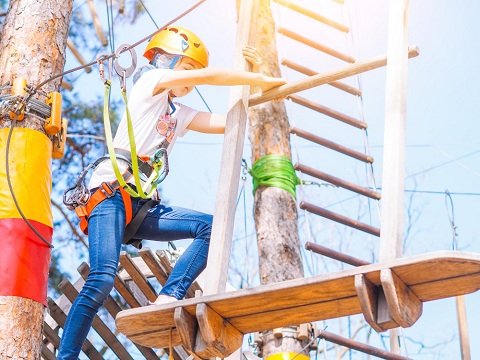Scaffolding is an indispensable tool in the construction industry, providing temporary platforms for workers to perform tasks at heights during building, maintenance, and repair projects. While scaffolds offer convenience and accessibility, they also present inherent safety risks that can lead to accidents, injuries, and even fatalities if not managed effectively. Therefore, robust safety protocols and comprehensive training are paramount to mitigate these risks and ensure the well-being of workers. In this extensive article, we will explore the multifaceted impact of scaffolding safety and training, covering a wide range of topics including OSHA requirements, the critical role of personal protective equipment (PPE), inspection and maintenance protocols, safety guidelines for workers, scaffolding training programs, and case studies highlighting the importance of safety in scaffolding operations.
OSHA Requirements for Scaffolding
The Occupational Safety and Health Administration (OSHA) in the United States sets forth stringent regulations governing the use of scaffolding to protect workers from hazards associated with working at heights. These regulations, outlined in 29 CFR 1926.451, cover various aspects of scaffold design, construction, erection, and use. Compliance with OSHA standards is mandatory for all employers and contractors involved in scaffold-related activities to ensure a safe work environment.
According to OSHA guidelines, scaffolds must be designed, erected, and dismantled under the supervision of competent personnel, ensuring compliance with specific criteria to guarantee structural integrity and stability. Among the key requirements stipulated by OSHA are guidelines for scaffold capacity, stability, platform construction, guardrails, and access points. Scaffold components and materials must be capable of supporting their own weight plus four times the maximum intended load without failure, minimizing the risk of collapse and ensuring the safety of workers.
Furthermore, OSHA mandates the provision of fall protection measures, such as guardrails, personal fall arrest systems, or safety nets, for workers on scaffolds above certain heights to prevent falls and mitigate potential injuries. Failure to comply with OSHA standards can result in severe penalties, including fines and citations, underscoring the importance of adherence to safety regulations in scaffold operations.
Proper Use of Personal Protective Equipment (PPE)
Personal Protective Equipment (PPE) is essential for safeguarding workers against potential hazards encountered during scaffold-related activities. OSHA requires employers to conduct a thorough hazard assessment of the worksite and provide appropriate PPE to employees free of charge. Common types of PPE used in scaffold work include hard hats, safety harnesses, non-slip footwear, and high-visibility clothing. Proper utilization of PPE significantly reduces the risk of injuries from falling objects, slips, trips, and falls, enhancing worker safety and well-being.
Moreover, workers must receive comprehensive training on the proper selection, use, maintenance, and limitations of PPE to ensure its effectiveness in protecting against workplace hazards. Regular inspection and replacement of PPE are also essential to maintain its functionality and reliability, minimizing the likelihood of accidents and injuries on the job site.
Scaffolding Inspection and Maintenance
Regular inspection and maintenance are critical components of scaffold safety management, aimed at identifying and rectifying potential safety hazards before they escalate into accidents. OSHA mandates that scaffolds be inspected by competent personnel before each use to ensure stability, proper assembly, secure anchorage, and the absence of defects. Inspections should be conducted by qualified individuals with the necessary knowledge and experience to identify hazards and implement corrective actions effectively.
During inspections, attention should be given to various aspects, including scaffold components, connections, platforms, guardrails, and access points. Any damaged or deteriorated components must be promptly repaired or replaced to prevent accidents and ensure the continued safety of workers. Furthermore, ongoing maintenance activities, such as cleaning, lubricating, and tightening scaffold components, are essential to uphold structural integrity and prevent premature deterioration.
Scaffolding Safety Tips for Workers
Workers engaged in scaffold-related activities must adhere to stringent safety protocols to mitigate risks and prevent accidents. Some essential safety tips for scaffold workers include:
- Attend comprehensive training on scaffold erection, use, and dismantling procedures to enhance competency and awareness of safety guidelines.
- Always wear appropriate PPE, including hard hats, safety harnesses, and non-slip footwear, to protect against potential hazards.
- Maintain three points of contact when ascending or descending scaffolds to ensure stability and prevent falls.
- Avoid overloading scaffolds beyond their rated capacity to prevent structural failure and collapse.
- Secure tools, materials, and equipment to prevent them from falling onto workers below, reducing the risk of injuries.
- Refrain from altering or modifying scaffold components without authorization from competent personnel to maintain structural integrity.
- Immediately report any safety concerns, hazards, or incidents to supervisors or designated safety personnel for prompt resolution and mitigation.
By adhering to these safety guidelines, workers can significantly reduce the risk of accidents and injuries while working on scaffolds, fostering a safer and more productive work environment.
Scaffolding Training for Workers and Supervisors
Effective training is fundamental to ensuring the competency of workers and supervisors engaged in scaffold-related activities. Training programs should encompass various aspects, including scaffold erection, dismantling, inspection, hazard recognition, emergency procedures, and the proper use of PPE. Workers should undergo comprehensive training before being permitted to work on scaffolds independently, while supervisors should receive additional training to oversee scaffold activities and enforce safety protocols effectively.
Employers have a responsibility to provide ongoing training and refresher courses to reinforce safe practices and keep workers abreast of any changes in regulations or industry standards. Training should be tailored to the specific types of scaffolds and work environments encountered on construction sites to address unique challenges and hazards effectively.
In conclusion, scaffolding safety and training are integral components of construction site management, playing a crucial role in protecting the well-being of workers and preventing accidents and injuries. By adhering to OSHA regulations, utilizing appropriate PPE, conducting regular inspections and maintenance, following safety guidelines, and providing comprehensive training, employers can create a safer work environment and ensure the successful completion of construction projects.
Case Studies:
- Fatal Scaffold Collapse: In 2019, a construction worker in New York City lost his life when a scaffold collapsed at a building site. An investigation revealed that the scaffold was improperly erected and lacked adequate fall protection measures, highlighting the catastrophic consequences of disregarding safety protocols.
- Successful Safety Initiative: A construction company in California implemented a comprehensive scaffold safety training program for its workers, resulting in a significant reduction in accidents and injuries related to scaffold operations. By prioritizing safety and investing in employee training, the company enhanced worker morale and productivity while minimizing downtime due to accidents.
Here are some FAQs about The Impact of Scaffolding Safety and Training
Scaffolding safety training is crucial for construction workers to prevent accidents, injuries, and fatalities. Proper training ensures that workers understand how to assemble, use, and dismantle scaffolding safely, identify potential hazards, and follow industry regulations and standards.
Inadequate scaffolding safety training can lead to accidents such as falls, collapses, and struck-by incidents, resulting in injuries or fatalities for workers and bystanders. It can also result in costly property damage, project delays, and legal liabilities for employers.
Scaffolding safety training helps foster a culture of safety on construction sites by promoting awareness, responsibility, and accountability among workers and supervisors. When everyone is trained to recognize and address safety hazards, incidents can be prevented, and a safer working environment is maintained.
Scaffolding safety training programs typically cover topics such as:
o Hazard recognition and assessment
o Scaffold assembly, use, and dismantling procedures
o Fall protection measures, including the proper use of personal protective equipment (PPE)
o Load capacity and weight distribution
o Inspection and maintenance requirements
o Emergency procedures and rescue protocols
Employers can ensure that scaffolding safety training is effective by:
Providing comprehensive training that is tailored to the specific needs of the workforce and the types of scaffolding used on-site.
Offering refresher training sessions regularly to reinforce key concepts and address new safety concerns.
Encouraging active participation and engagement from workers through hands-on demonstrations, interactive exercises, and real-life scenarios.
Evaluating training outcomes through assessments, feedback, and observation to identify areas for improvement.
Regulatory standards, such as those set by OSHA (Occupational Safety and Health Administration) in the United States or similar agencies in other countries, establish minimum requirements for scaffolding safety training and practices. Compliance with these standards is mandatory for employers to ensure the safety of workers and avoid penalties.
Conclusion
Scaffolding safety and training are paramount to protecting the well-being of construction workers and ensuring the successful completion of projects. By adhering to OSHA regulations, providing adequate PPE, conducting regular inspections, implementing safety protocols, and investing in comprehensive training programs, employers can create a culture of safety and mitigate the risks associated with scaffold operations. Ultimately, prioritizing safety not only preserves lives but also enhances productivity and fosters a positive work environment in the construction industry.
References:
- Occupational Safety and Health Administration (OSHA). (n.d.). Scaffolding. https://www.osha.gov/scaffolding
- Occupational Safety and Health Administration (OSHA). (n.d.). Personal Protective Equipment (PPE). https://www.osha.gov/personal-protective-equipment






